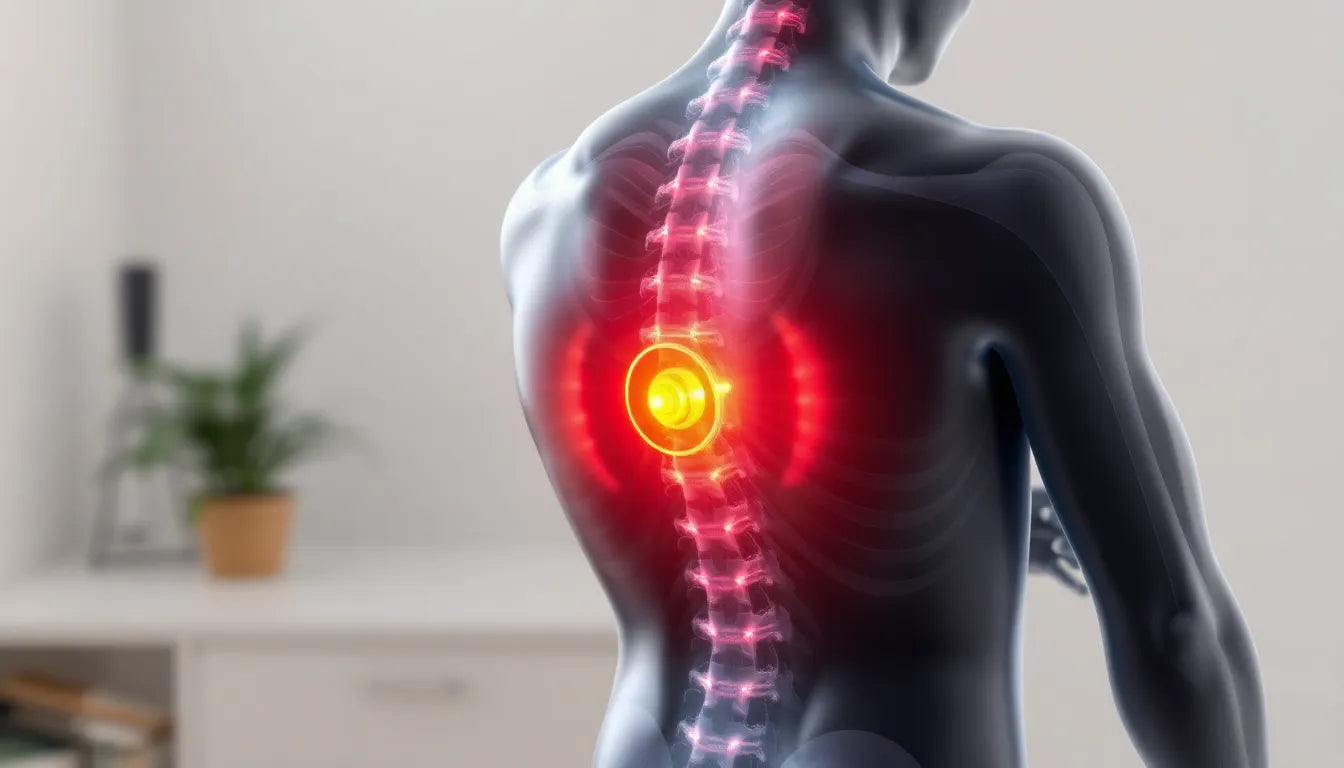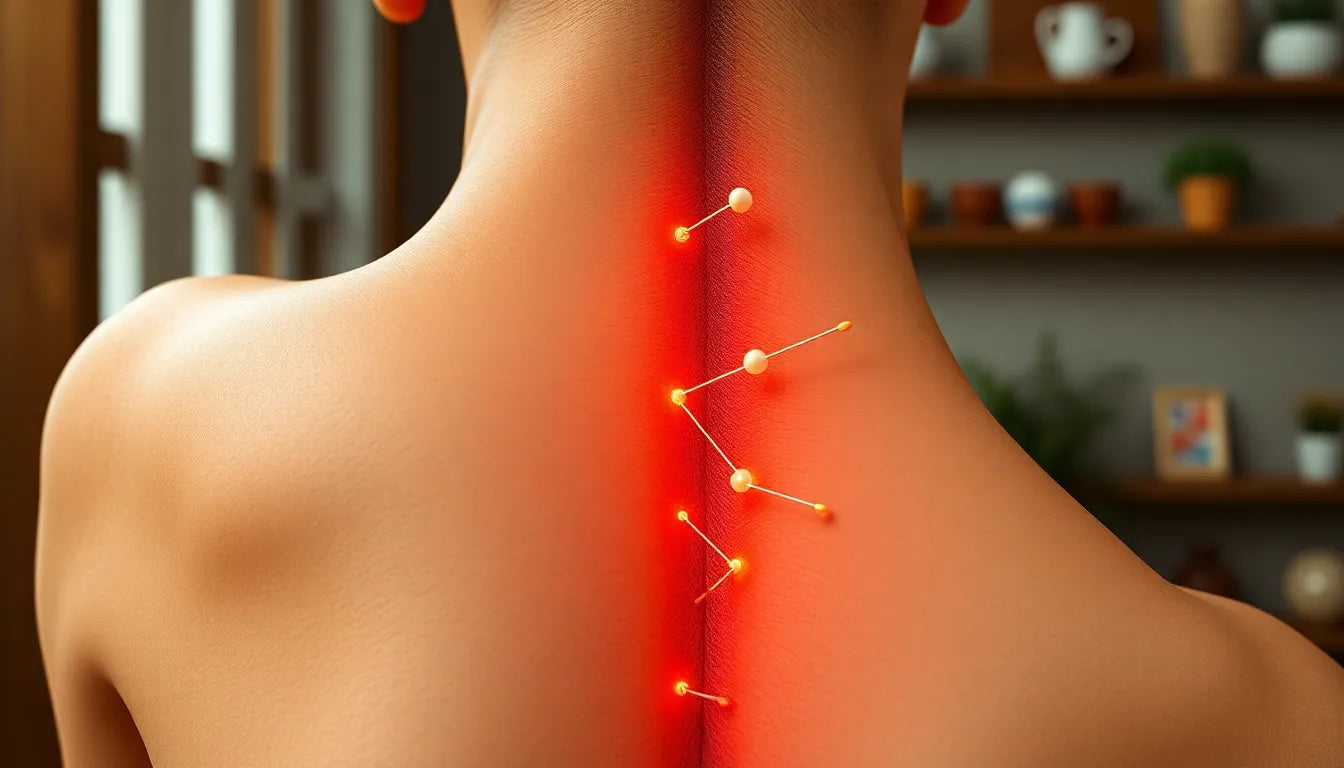Living with a herniated disc can be a challenging experience, especially when it comes to getting a good night's sleep. A herniated disc occurs when the soft center of a spinal disc pushes through a crack in the tougher exterior casing, often leading to pain, numbness, or weakness in an arm or leg. This condition can significantly impact sleep quality, making it difficult for individuals to find a comfortable position and achieve restorative rest. Proper sleep is crucial not only for daily functioning but also for the recovery and management of herniated disc symptoms.
Understanding the challenge of sleep with a herniated disc
For those dealing with a herniated disc, sleep can become a nightly struggle. The pain and discomfort associated with this condition can make it hard to find a position that doesn't exacerbate the symptoms. Yet, achieving quality sleep is essential for healing and maintaining overall health. During sleep, the body works to repair itself, and without adequate rest, the recovery process can be hindered. This makes it imperative for individuals with a herniated disc to adopt sleep strategies that promote comfort and reduce pain.
The impact of sleep position on herniated disc symptoms
Sleep position plays a pivotal role in either alleviating or worsening the symptoms of a herniated disc. Certain positions can help maintain the spine's natural alignment and reduce pressure on the affected area, while others may increase discomfort and disrupt sleep. Many people with a herniated disc find it challenging to identify a position that provides relief, often leading to restless nights and fatigue. Understanding how different positions affect spinal alignment and pressure points is crucial in developing a sleep strategy that supports recovery and minimizes pain.
In the following sections, we'll explore effective sleep positions and strategies specifically tailored for individuals with a herniated disc. From optimal sleeping positions to supportive aids, these insights aim to help you achieve restful nights and improve your quality of life despite the challenges posed by a herniated disc.
Optimal sleep positions for herniated disc relief
Finding the right sleep position can significantly impact the quality of rest for those suffering from a herniated disc. One of the most recommended positions is sleeping on your back. This position helps maintain the spine's natural curvature and evenly distributes body weight, minimizing pressure points that could exacerbate pain. For added comfort and spinal alignment, placing a pillow under the knees is advisable. This simple adjustment can reduce tension in the lower back and promote a more restful sleep.
Benefits of side sleeping
Side sleeping can also be beneficial, particularly when a pillow is placed between the knees. This setup helps keep the spine aligned and reduces stress on the lower back. The fetal position, where you gently curl your knees towards your chest, can further open up the vertebral spaces, potentially alleviating nerve pressure. For those who prefer side sleeping, it’s important to ensure that the head and neck are supported with a pillow that maintains a neutral spine alignment.
Reclined sleeping position
For individuals experiencing severe pain, adopting a reclined position might offer relief. Sleeping in a semi-upright position using a recliner or an adjustable bed can help reduce pressure on the spine. This position is particularly advantageous for certain types of herniations, as it can decrease tension in the lower back and facilitate a more comfortable sleep experience.
Positions to avoid for herniated disc sufferers
While some positions can provide relief, others may worsen symptoms. Stomach sleeping is generally discouraged due to its tendency to increase spinal pressure. If this position is unavoidable, consider placing a pillow under the abdomen to help reduce stress on the spine. However, this modification might not be suitable for everyone, so it's essential to listen to your body and consult with a healthcare professional if necessary.
Utilizing supportive aids for better sleep
To enhance comfort and support during sleep, incorporating ergonomic aids can be beneficial. Memory foam or orthopedic pillows can provide the necessary support for spinal alignment, while a medium-firm mattress can help distribute weight evenly. Additionally, rolled towels or lumbar rolls can be used to support the lower back when needed. For those who prefer a reclined position, investing in a recliner chair or adjustable bed can make a significant difference in comfort and pain management.
Recommended sleep positions and aids
| Position | Benefits | Recommended Aids |
|---|---|---|
| Back Sleeping | Even weight distribution, spinal support | Pillow under knees |
| Side Sleeping | Reduces stress on spine, opens vertebrae | Pillow between knees, fetal position |
| Reclined | Relieves spinal pressure | Recliner chair, adjustable bed |
By carefully selecting the right sleep position and utilizing supportive aids, individuals with a herniated disc can improve their sleep quality and reduce discomfort. Experimenting with different positions and adjustments can help find the most comfortable setup for restful nights.
Personalizing sleep solutions for herniated disc relief
When it comes to managing a herniated disc, individual needs can vary significantly. Personalizing your sleep strategy is crucial for finding the most comfortable and effective setup. Different herniation types, pain levels, and personal preferences all play a role in determining the best approach. Experimenting with various sleep positions and supportive aids can help identify what works best for you. Whether it's adjusting pillow placements, trying a new mattress, or exploring different sleeping positions, customization is key to achieving restful nights.
For some, back sleeping with a pillow under the knees provides the most relief, while others may find side sleeping with a pillow between the knees or in a reclined position more beneficial. It's important to listen to your body and make adjustments as needed. Consulting with a healthcare professional can also provide valuable insights and recommendations tailored to your specific condition.
Final thoughts on achieving restful sleep
Quality sleep is essential for managing herniated disc symptoms and promoting overall well-being. By adopting ergonomic solutions and tailoring your sleep environment, you can significantly improve your sleep quality. Remember that patience and persistence are vital as you explore different strategies. Over time, you will likely find the combination of positions and aids that offer the most comfort and relief.
Investing in supportive aids like memory foam pillows, medium-firm mattresses, and adjustable beds can make a noticeable difference in your sleep experience. These tools help maintain proper spinal alignment, reduce pressure points, and facilitate a more restful night's sleep. As you continue to refine your sleep strategy, you'll be better equipped to manage your symptoms and enjoy the benefits of a good night's rest.
Frequently asked questions
What is the best position to sleep with a herniated disc?
Sleeping on your back with a pillow under your knees is generally recommended for optimal spinal support and alignment.
Can I sleep on my stomach if I have a herniated disc?
While not ideal, placing a pillow under the abdomen may help if this position is preferred. It’s best to consult with a healthcare provider for personalized advice.
How can I make side sleeping more comfortable?
Use a pillow between your knees to maintain spinal alignment and consider pulling your knees up into the fetal position for added comfort.
Are there specific pillows or mattresses recommended for herniated disc sufferers?
Memory foam or orthopedic pillows and medium-firm mattresses are often suggested to support spinal alignment and reduce pressure points.
What should I do if I still experience pain despite changing sleep positions?
If pain persists, consult a healthcare professional for further evaluation and consider integrating additional ergonomic aids or adjustments to your sleep environment.
Sources
- Pain and Spine Specialists. "Best Sleep Positions for Herniated Discs."
- New York Spine Institute. "Sleeping Tips for Back and Neck Pain."
- NY Bone & Joint. "Spinal Health: Sleep Positions."
- Florida Surgery Consultants. "Comprehensive Guide to Sleep Positions for Herniated Disc Relief."
- Pain and Spine Institute (Chicago). "Expert Tips for Sleeping with a Herniated Disc."
- Spine-Health. "Specific Sleep Positions for Different Herniation Types."
- Phoenix Rehab. "Practical Sleep Tips for Herniated Disc Patients."


















